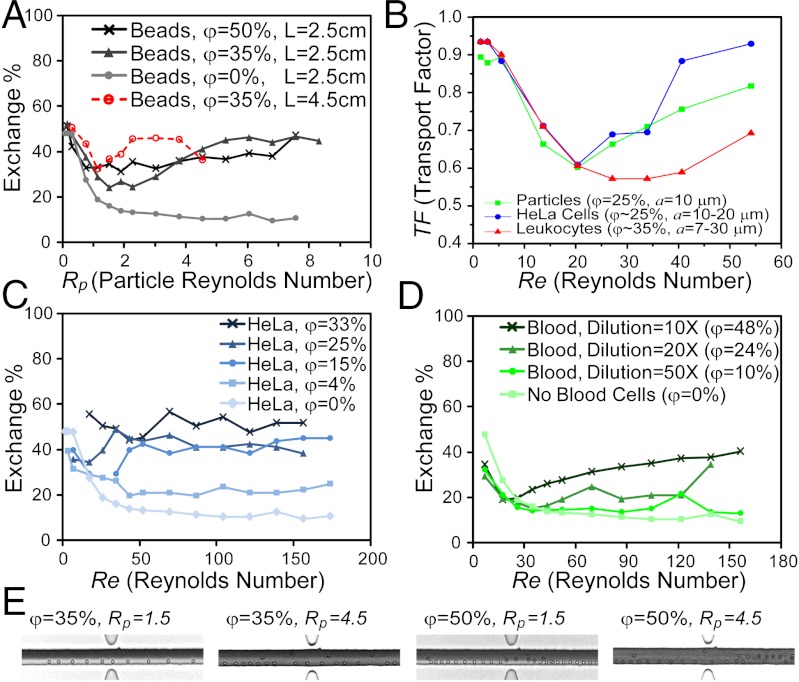Fig. 5.
Application of particle-induced convection to fluid switching and mixing around beads and cells. (A) Demonstration of fluid exchange around 10 μm rigid beads. The amount of fluid transferred into the particle stream (exchange %), increases for increasing particle Reynolds number. (B) Transport factor increases with Reynolds number for HeLa cells (blue circles), leukocytes (red triangles), and 10 μm particles (green squares) as a comparison. (C) Exchange % increases for HeLa cells (15 μm average diameter), for increasing flow rates, Increasing φ intensifies the extent of washing. (D) Exchange % for blood cells decreases with dilution rate, 50X (φ = 10%), 20X (φ = 24%), and 10X (φ = 48%), and increases with increasing flow rate. We found a 0.9–3.6% error in exchange % over nine experiments. (E) At increased particle concentrations, interparticle interactions cause the particles to defocus. For φ = 35%, particles are still focused 2 cm downstream at Rp = 1.5 whereas with intensified disturbance at Rp = 4.5 a fraction of the particles leave the preferred equilibrium position. The defocusing effect is manifested at smaller Rp for higher particle concentration. For instance, for φ = 50%, particles have already started defocusing at Rp = 1.5, with a large fraction of particles defocused at Rp = 4.5.

